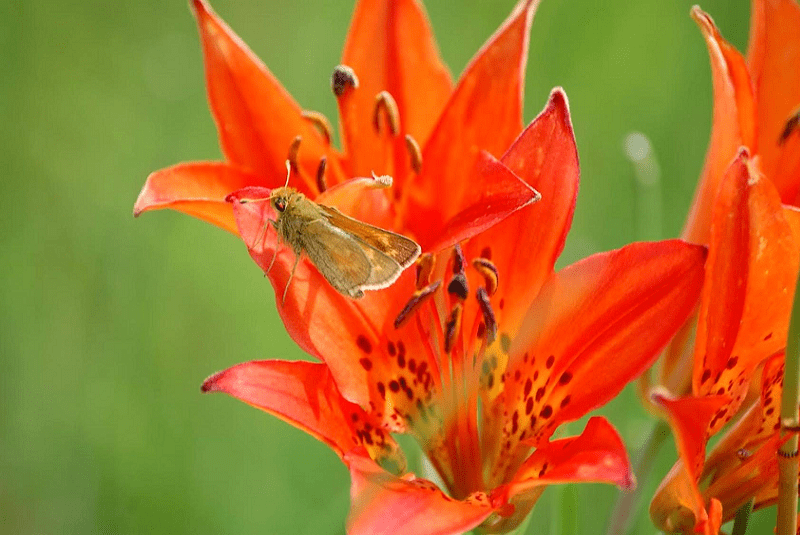
Dakota Skipper Facts
- The adorable little Dakota Skipper remains a rather small species of butterfly that once inhabited a wide swathe of North America.
- In a rather large portion of its remaining endemic range, the lovely little Lepidoptera enjoys protection under the Endangered Species Act.
- Despite its rather small size, this surprising beauty remains a significantly stronger and faster flyer than most other butterflies, including larger species.
- Historically, the greatest threats this lovely invertebrate has faced have consisted of the conversion of its native habitat to ranches and farms.
Dakota Skipper Physical Description
Like many related species, the Dakota Skipper displays a slight degree of sexual dimorphism. Females average slightly larger than the males.
For that reason, an average wingspan measures roughly 0.55 in (1.4 cm) in the more diminutive males, and slightly more in females.
The Dakota Skipper has relatively short antennae which also possess a sharply recurved tip. Males typically show predominantly brownish-orange in color while females vary widely in their coloring. They are most commonly darker with light spots.
- Kingdom: Animalia
- Phylum: Euarthropoda
- Class: Insecta
- Order: Lepidoptera
- Family: Hesperiidae
- Genus: Hesperia
- Species: H. dacotae
Dakota Skipper Distribution, Habitat, and Ecology
Currently, due to human activity, the range of the Dakota Skipper spans only three states in the United States and two provinces in Canada.
The lovely insect now inhabits only Minnesota, North Dakota and South Dakota in the United States, and the Canadian provinces of Manitoba and Saskatchewan.
This Lepidoptera appears to prefer regions of dry grass, as well as prairies.
The adults feed on the nectar of a variety of flowers specific to their habitat.
This insect species remains considered to be Highly Threatened, primarily due to habitat loss. Conservation efforts are focusing on preserving regions of prairie grass within their current range.
Check out our articles on Karner Blue Butterfly, Mitchell’s Satyr Butterfly, Purple Emperor
